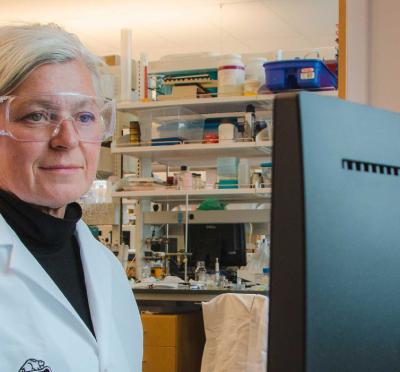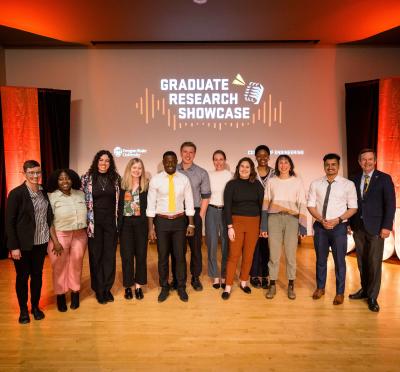Tyler Radniecki, associate professor of environmental engineering at Oregon State University, is partnering with local water utilities and municipalities on strategies for enhancing wastewater treatment processes that could result in lower costs, cheaper sources of renewable energy, and, ultimately, cleaner water for everyone.
Last year, Radniecki received a five-year, $500,000 National Science Foundation CAREER Award for a project investigating how complex microbial communities respond to the anaerobic co-digestion of fats, oils, and grease in wastewater treatment bioreactors.
Adding these bacterial food sources, called FOG, to the mix can boost methane output so dramatically that it becomes an economically viable source of renewable energy. As an example, the Gresham Wastewater Treatment Plant in Gresham, Oregon, began using the FOG co-digestion process in 2012 and achieved energy self-sufficiency by 2015, saving the town around $500,000 in electricity costs annually.
But FOG co-digestion is complex and not fully predictable. For example, the addition of too much FOG can overwhelm the system, potentially causing millions of dollars in losses. This leads plant engineers to err on the side of caution, which limits the economic potential of the technology. Unfortunately, there isn’t a one-size-fits-all solution to this problem.
Radniecki’s new project — undertaken in partnership with Oregon wastewater treatment utilities in Gresham, Hillsboro, Portland, Salem, and Corvallis — aims to develop operational strategies to increase both the reliability of the anaerobic co-digestion process and the amount of methane produced by these systems by purposefully shaping the structure of their microbial communities.
FOG co-digestion has been studied in the lab and in the field for many years. However, due to the complexity and variability of the compositions of the FOG substrate and the microbial communities within the bioreactors, it has been difficult to take lessons learned from one system and apply them to another. Part of this comes from how researchers have traditionally characterized microbial communities by creating “laundry lists” of the species present, Radniecki says.
“Microbial communities work together to process nutrients and organic matter in engineered and natural systems,” Radniecki explained. “It is difficult to predict how complex microbial communities will behave based on only what species are known to be present, because the most prevalent microbes often change over time, and from location to location, even as the community behavior stays the same.”
Think of a summer stock production of “Hamlet”: The names of the individual actors might be different from one performance to the next, but you know you are going to have a Hamlet, an Ophelia, and a Claudius every night. Radniecki’s novel approach aims to shift the paradigm of how researchers characterize complex microbial communities by replacing the traditional “laundry lists” with metrics that should be consistent between two bioreactors performing equally.
To do this, principles of theoretical ecology will be applied to quantify the fundamental processes that drive microbial community architecture, functionality, and fluidity. The participating wastewater treatment facilities will provide Radniecki with samples taken from full-scale digesters at monthly intervals over a one-year period. This will enable Radniecki’s group to observe how microbial community structures change over time, apply theoretical ecology parameters to describe these changes numerically, and determine which operational parameters are most responsible for these changes.
Ashley Berninghaus, a doctoral student in Radniecki’s lab, keeps the reactors going, runs the experiments, and collects the data. She first became interested in turning wastewater into renewable energy when she was an undergraduate at Montana State University, where she used wastewater as a substrate to grow algae for biodiesel.
“I find that the more I get into microbiology, the more I enjoy it,” Berninghaus said. “This project is especially interesting to me because it is right at the intersection of clean water and renewable energy. These are two of the biggest challenges facing society today. Who doesn’t want to save the Earth?”
This research will ideally determine whether strategic changes to the operational parameters of biotreatment systems can shape their microbial communities into predictable compositions that reliably achieve the desired functional improvements. Laboratory-scale anaerobic digesters will be used to determine the effectiveness of changes in operational parameters in shaping the microbial community structure to maximize biogas productivity, create resistance to poor performance due to operational error, and increase resiliency of the system to recover from periods of poor performance.
Radniecki says the results of this work will have significant utility, both in designing systems and predicting future performance.
It will increase the profitability and sustainability of wastewater treatment plants, turning them from net consumers of energy to net producers, allowing them to sell their excess back to the grid,” he said.
MOMENTUM Issue Archives
Questions: editor@engr.oregonstate.edu




